
Julia Álvarez nació el 27 de marzo de 1950 en Nueva York. Poeta, novelista y ensayista. Nacida en Estados Unidos, pasó sus primeros años en la República Dominicana, siendo exiliada junto a su familia debido a la participación de su padre en un intento de derrocar al dictador militar Rafael Trujillo. Esta experiencia de exilio y las tensiones culturales que enfrentó al regresar a Estados Unidos, que influenciaron profundamente su obra reflejando sus propias experiencias como dominicana-americana. Aunque inicialmente estaba interesada en convertirse en artista visual, Álvarez descubrió su talento para la escritura creativa. Inició sus estudios universitarios en Connecticut College. Transferida a Middlebury College, egresa con el título de Bachelor of Arts, Summa Cum Laude. En 1974 recibió el Premio Lamont de la Academia de Poetas Americanos. En 1975, obtuvo la Maestría en Creación Literaria en Syracuse University. Complementó su formación con varios cursos graduados de inglés y literatura americana en Bread Loaf School of English. Durante varios años desarrolló actividades de enseñanza y animación literaria en instituciones escolares, así como conferencias y presentaciones, además como traductora, ha traducido al inglés poemas de Pablo Neruda. Su trabajo ha contribuido en gran medida a las teorías críticas sobre el multiculturalismo, el biculturalismo y el poscolonialismo. Por su labor Julia Álvarez fue honrada como uno de los seis Dominicanos-Americanos que han hecho contribuciones significativas a la comunidad, obtuvo el primer premio de narrativa del Third Woman Press Award en 1986 y un premio de la Fundación General Electric en el mismo año. El John Jay College, de The City University of New York, le otorgó el Doctorado Honoris Causa en Ciencias Humanas en 1996. La Feria Anual del Libro de Santo Domingo de 1997 fue dedicada a su obra. En septiembre del 2000 fue declarada Mujer del Año, por la publicación Latina Magazine y en el 2014 fue elogiada con la Medalla Nacional de las Artes entregada por el presidente Obama.
Fotografía: Brandon Cruz González
How the Garcia Girls Lost Their Accents (A Plume Book, 1991) · Homecoming: New and Collected Poems (Penguin Random House, 1996) · The Other Side (A Plume Book, 1996) · ¡Yo! (Algonquin Books, 1998) · Something to Declare: Essays (A Plume Book, 1999) · The secret footprints (Dragonfly Books, 2000) · En el nombre de Salomé (Vintage Español, 2000) · A cafecito story / El cuento del cafecito (Chelsea Green Publishing, 2001) · Las huellas secretas (Dragonfly Books, 2002) · Before we were free (Laurel Leaf, 2004) · Saving the World (Shannon Ravenel Book, 2006) · De cómo las muchachas García perdieron su acento (Debolsillo, 2007) · Había una vez una quinceañera : de niña a mujer en EE. UU. (A Plume Book, 2008) · Once Upon a Quinceañera (A Plume Book, 2008) · El mejor regalo del mundo: La leyenda de la vieja Belén / The Best Gift of All: The Legend of La Vieja Belén (Alfaguara, 2008) · How the Garcia Girls Lost Their Accents (Algonquin Books, 2010) · In the Time of the Butterflies (Algonquin Books, 2010) · De cómo la tía Lola vino para quedarse (Editorial Loqueleo, 2011) · The Woman I Kept to Myself (Algonquin Books, 2011) · A Gift of Gracias (Alfred A. Knopf , 2011) · Un regalo de gracias (Dragonfly Books, 2012) · Una boda en Haiti (A Plume Book, 2013) · A Wedding in Haiti (Algonquin Books, 2013) · ¿Dónde va a parar? (Siete Cuentos, 2016) · Already a Butterfly (Henry Holt and Co., 2020) · El cementerio de los cuentos sin contar (HarperCollins, 2024) · The Cemetery of Untold Stories (Algonquin Books, 2024)
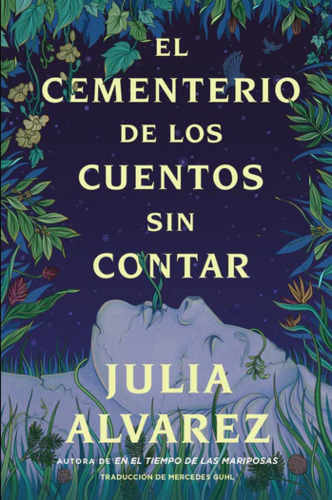
Alma Cruz ha decidido ponerle punto final a su carrera de escritora, pero teme acabar como su amiga, una exitosa novelista arrastrada a la locura por un libro que jamás terminó de escribir. Por eso, cuando hereda un modesto terreno en República Dominicana, se le ocurre sepultar allí sus decenas de manuscritos inconclusos. Quiere que descansen en paz en la misma tierra donde yacen sus raíces. Pero a diferencia de Alma, los protagonistas de sus relatos aún tienen mucho por decir, y encuentran en Filomena, la reservada cuidadora del cementerio, una ...
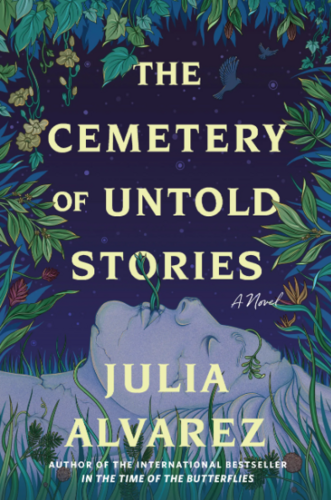
Alma Cruz, the celebrated writer at the heart of The Cemetery of Untold Stories, doesn’t want to end up like her friend, a novelist who fought so long and hard to finish a book that it threatened her sanity. So when Alma inherits a small plot of land in the Dominican Republic, her homeland, she has the beautiful idea of turning it into a place to bury her untold stories—literally. She creates a graveyard for the manuscript drafts and revisions, and the characters whose lives she tried and failed to bring to life and who still haunt her. Alma wants her characters to rest in ...
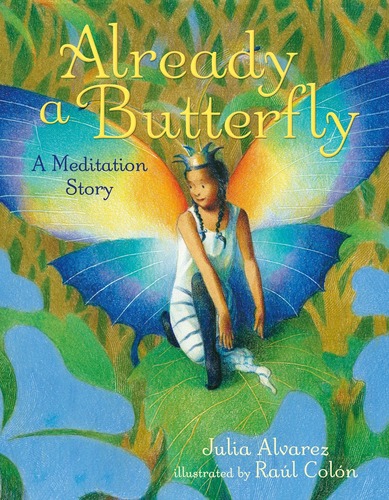
With so much to do in so little time, Mari is constantly on the move, flitting from flower to flower, practicing her camouflage poses, and planning for migration. She’s the busiest butterfly around. But does being productive mean she is happy? Mari couldn’t say. The only way she feels like a butterfly is by acting like one. Little does Mari know, the secret to feeling like herself is simply to focus her breath, find her quiet place, and follow her instincts. With the guidance of a thoughtful flower bud, Mari soon learns to meditate and appreciate that she was a ...
El nuevo libro ilustrado en español de la novelista próspera (How the Garcia Girls Lost Their Accents) y autora de niños (The Tia Lola Stories) Julia Alvarez es un poema bellamente elaborado para niños que aborda delicadamente el lado emocional de la muerte. El libro pregunta, “Cuando alguien muere, ¿dónde va a parar? / ¿Será con el viento cuando le da con soplar? … ¿Me hacen guiños—como estrellas cuando les pido un favor—parpadeando ‘Eres perfecta, no hay que ser algo mejor? ...
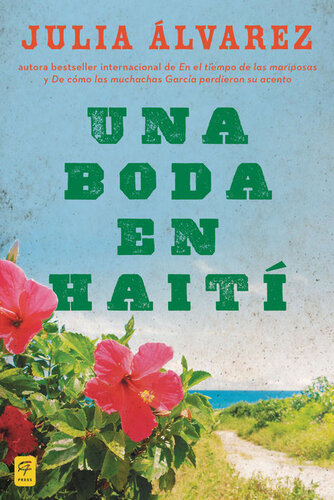
En este relato íntimo y verdadero de una promesa cumplida, la aclamada novelista y poeta dominicana Julia Álvarez nos lleva en un viaje de experiencias que desafía la forma en que vemos la historia y cómo puede ser reinventada cuando los ciudadanos de dos países—tradicionalmente en conflicto a pesar de la frontera compartida—se hacen amigos. En una historia que va más allá de las fronteras y las familias, Álvarez reflexiona sobre las alegrías y las cargas del amor por sus padres, por su esposo y por un joven ...
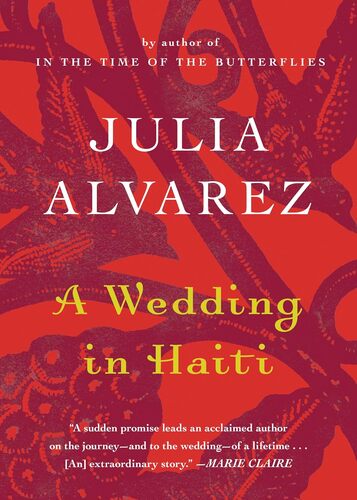
In a story that travels beyond borders and between families, acclaimed Dominican novelist and poet Julia Alvarez reflects on the joys and burdens of love—for her parents, for her husband, and for a young Haitian boy known as Piti. In this intimate true account of a promise kept, Alvarez takes us on a journey into experiences that challenge our way of thinking about history and how it can be reimagined when people from two countries—traditional enemies and strangers—become friends.
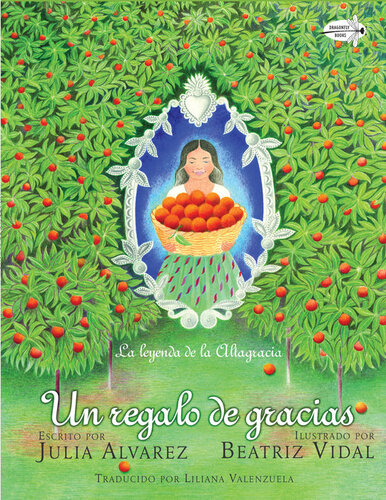
Las dotes narrativas de Julia Alvarez se encuentran en su plenitud cuando logra que la leyenda dominicana de la Altagracia cobre vida en este encantador libro ilustrado. Cuando se pierde la cosecha de aceitunas de su familia, María teme que tendrán que abandoner la finca situada en la nueva isla colonial. Entonces, una noche sueña con una bella y misteriosa señora velada por árboles cargados de sabrosas naranjas como aquéllas que sus padres solían comer en su tierra de Valencia, España. ¿Podrían estos “soles ...
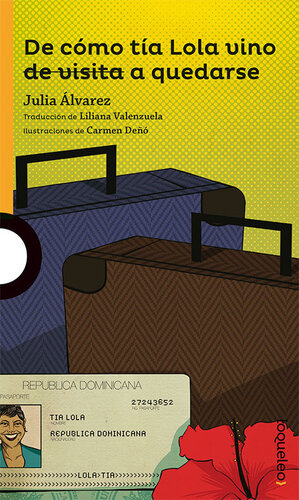
Cuando tía Lola llega a Vermont —donde se acaba de mudar la familia de Miguel— desde República Dominicana, para ayudar a su mami, el niño se preocupa porque cree que su extravagante y amistosa tía, que no sabe hablar inglés, lo pondrá en aprietos y le hará más difícil hacer nuevos amigos. Pero para sorpresa de Miguel, el encanto de tía Lola le ganará el cariño y la admiración de toda la comunidad.
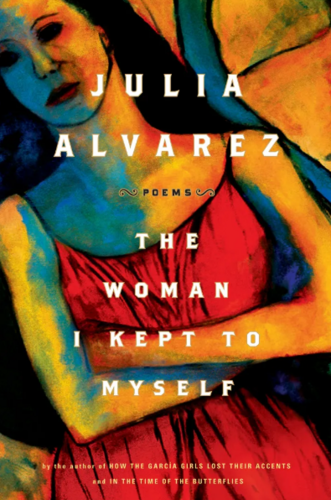
The works of this award-winning poet and novelist are rich with the language and influences of two cultures: those of the Dominican Republic of her childhood and the America of her youth and adulthood. They have shaped her writing just as they have shaped her life. In these seventy-five autobiographical poems, Alvarez’s clear voice sings out in every line. Here, in the middle of her life, she looks back as a way of understanding and celebrating the woman she has become.
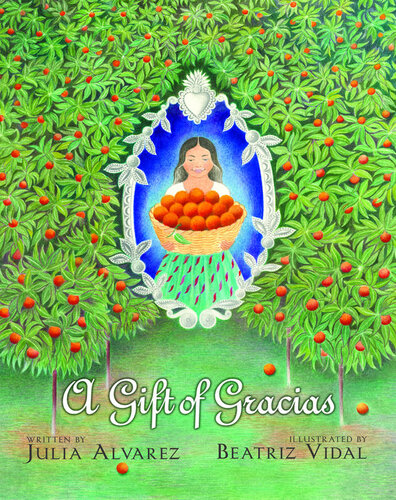
After their olive crop fails, Maria fears that her family will have to abandon their farm on the new island colony. Then, one night she dreams of a mysterious beautiful lady shrouded by trees with branches hung with hundreds of little suns. They are oranges like the ones Maria’s parents once ate in their homeland, Valencia, Spain. That very day Maria and her family plant the seeds that soon yield a magnificent orange grove and save the farm. But who was the mysterious lady who appeared in her dream and will Maria ever find her again?

It is November 25, 1960, and three beautiful sisters have been found near their wrecked Jeep at the bottom of a 150-foot cliff on the north coast of the Dominican Republic. The official state newspaper reports their deaths as accidental. It does not mention that a fourth sister lives. Nor does it explain that the sisters were among the leading opponents of Gen. Rafael Leónidas Trujillo’s dictatorship. It doesn’t have to. Everybody knows of Las Mariposas—the Butterflies. In this extraordinary novel, the voices of all four sisters--Minerva, Patria, María ...

Acclaimed writer Julia Alvarez’s beloved first novel gives voice to four sisters as they grow up in two cultures. The García sisters—Carla, Sandra, Yolanda, and Sofía—and their family must flee their home in the Dominican Republic after their father’s role in an attempt to overthrow brutal dictator Rafael Trujillo is discovered. They arrive in New York City in 1960 to a life far removed from their existence in the Caribbean. In the wondrous but not always welcoming U.S.A., their parents try to hold ...
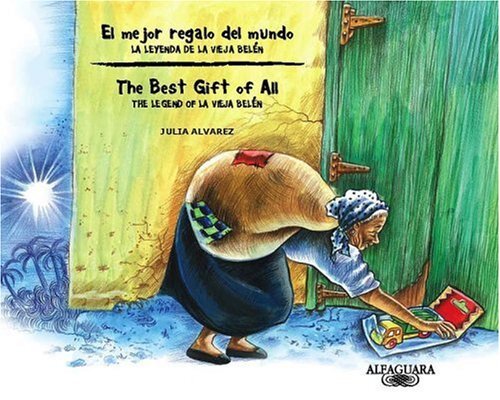
Renowned Latina author Julia Alvarez recreates the legend of Dominican folk character ''La Vieja Belen" in this delightful bilingual rhyming story, beautifully illustrated by Dominican artist Ruddy Nunez. Alvarez's retelling keeps the magic of the traditional account while contributing a down-to-earth, timely moral: ''Of all the gifts you can give, your time is the best gift.''
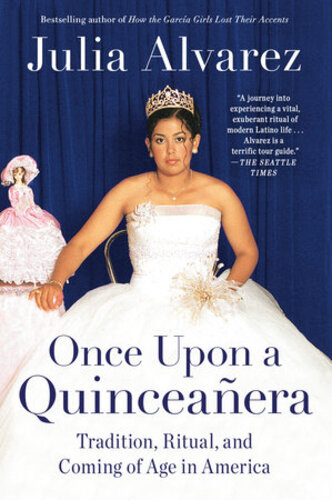
The quinceañera, a celebration of a Latina girl’s fifteenth birthday, has become a uniquely American trend. This lavish party with ball gowns, multi-tiered cakes, limousines, and extravagant meals is often as costly as a prom or a wedding. But many Latina girls feel entitled to this rite of passage, marking a girl’s entrance into womanhood, and expect no expense to be spared, even in working-class families. Acclaimed author Julia Alvarez explores the history and cultural significance of the “quince” in the United States, and the consequences of ...
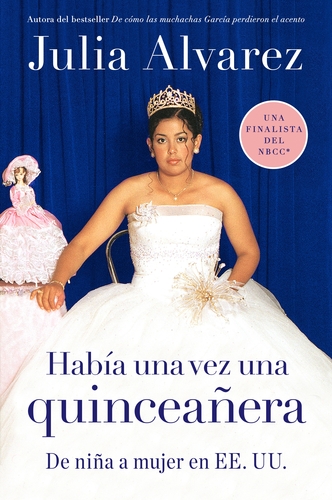
La fiesta de quince años de las muchachas latinas o “la quinceañera” como se le conoce en los Estados Unidos, se ha convertido en una tendencia singularmente americana. Esta espléndida fiesta de vestidos largos y elegantes, pasteles de varias capas, limusinas y banquetes extravagantes, a menudo es tan costosa como un baile de graduación o una boda. Sin embargo, muchas jóvenes latinas sienten que tienen derecho a esto rito de iniciación, que señala el momento en que se vuelven mujeres, y esperan que no se escatime ningún ...
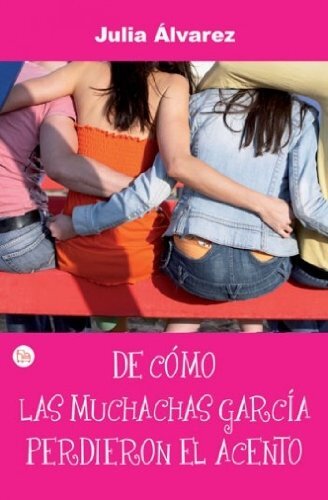
A través de quince relatos relacionados entre sí, la autora retrata la vida de una familia dominicana exiliada en el Bronx neoyorquino. Las cuatro hijas, las García del título, intentan adaptarse a su nuevo país y se rebelan contra sus mayores.
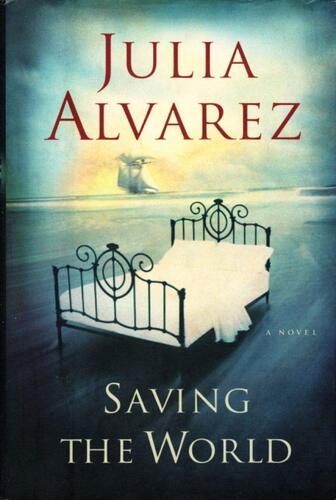
Latina novelist Alma Huebner is suffering from writer's block and is years past the completion date for yet another of her bestselling family sagas. Her husband, Richard, works for a humanitarian organization dedicated to the health and prosperity of developing countries and wants her help on an extended AIDS assignment in the Dominican Republic. But Alma begs off joining him: the publisher is breathing down her neck. She promises to work hard and follow him a bit later. The truth is that Alma is seriously sidetracked by a story she has stumbled across. It's the story of a much earlier ...

From award-winning author Julia Alvarez comes the story of Anita de la Torre, a 12-year-old girl living in the Dominican Republic in 1960. Most of her relatives have immigrated to the United States, her Tío Toni has disappeared, Papi has been getting mysterious phone calls about butterflies and someone named Mr. Smith, and the secret police have started terrorizing her family for their suspected opposition to the country’s dictator. While Anita deals with a frightening series of events, she also struggles with her adolescence and her own personal flight to be free.
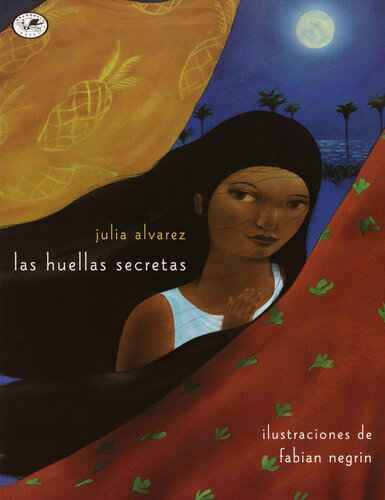
En un isla no muy lejana, en una época no muy distante, había una tribu de criaturas llamadas ciguapas. Vivían en frescas cuevas azules en el fondo del mar y salían a la tierra solamente de noche en busca de alimentos. Afortunadamente, tenían un secreto que las protegía de los seres humanos: tenían los pies al revés, así nadie podía seguirles las huellas. Pero una vez, casi descubren su secreto . . . La galardonado escritora Julia Alvarez teje un cuento mágico sobre una valiente y aguerrida ciguapa llamada Guapa, ...
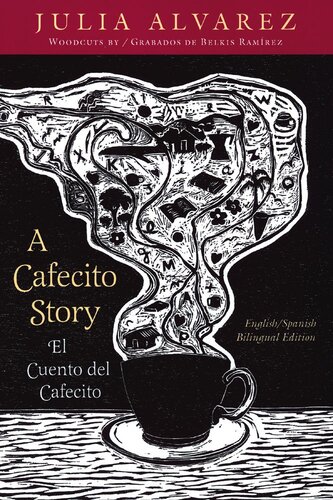
A Cafecito Story is a story of love, coffee, birds and hope. It is a beautifully written eco-fable by best-selling author Julia Alvarez. Based on her and her husband's experiences trying to reclaim a small coffee farm in her native Dominican Republic, A Cafecito Story shows how the return to the traditional methods of shade-grown coffee can rehabilitate and rejuvenate the landscape and human culture, while at the same time preserving vital winter habitat for threatened songbirds.
Not a political or environmental polemic, A Cafecito Story is instead a poetic, modern ...
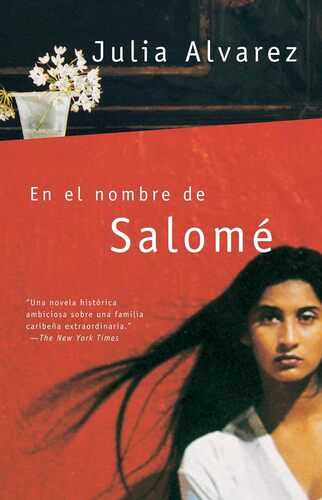
Es el verano de 1960 y Camila Henríquez Urena, profesora de español jubilándose de la Universidad de Vassar, está empacando sus últimas pertenencias antes de mudarse de su apartamento en Poughkeepsie, Nueva York para unirse a la revolución de Fidel Castro en Cuba. Camila es hija de Salomé Urena, la famosa poetisa dominicana de finales del siglo diecinueve que instigaba revolución con sus apasionados versos, se casó con un presidente y luchó por educar a las niñas de su querida isla. Para Camila su llamado a la ...

The Dominican legend of the ciguapas, creatures who lived in underwater caves and whose feet were on backward so that humans couldn't follow their footprints, is reinvented by renowned author Julia Alvarez. Although the ciguapas fear humans, Guapa, a bold and brave ciguapa, can't help but be curious--especially about a boy she sees on the nights when she goes on the land to hunt for food. When she gets too close to his family and is discovered, she learns that some humans are kind. Even though she escapes unharmed and promises never to get too close to a human again, Guapa still sneaks ...
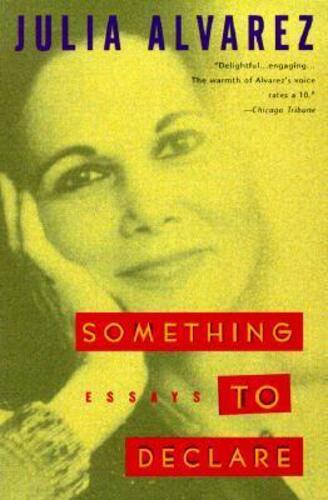
Reading Julia Alvarez's new collection of essays is like curling up with a glass of wine in one hand and the phone in the other, listening to a big-hearted, wisecracking friend share hard-earned wisdom about family, identity, and the art of writing." --People The rich and revealing essays in Something to Declare offer Julia Alvarez's dual meditations on coming to America and becoming a writer. In the first section, "Customs," Alvarez relates how she and her family fled the Dominican Republic and its oppressive dictator, Rafael Trujillo, settling in New York City in the 1960s. Here Julia ...
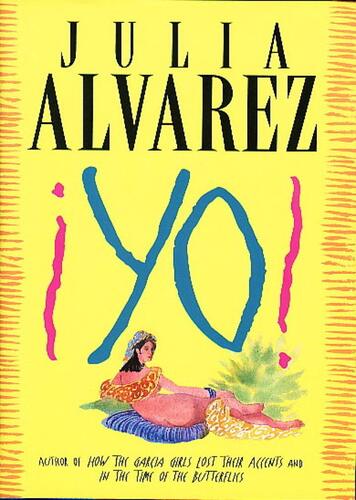
¿Quién es Yo? ¿Una temible escritora que ejerce su oficio a pesar de la realidad de sus personajes? ¿Una invención de sí misma o una personalidad buscándose desesperadamente en otra cultura y en los demás? En ¡Yo! se aprecia el otro perfil de toda historia: la ficción que logra escapar al creador para revelarse sobre el claro lienzo de una realidad siempre aterradora. Quizá Yolanda García sea la única que logra escapar de la imaginación, además de ser la entrañable protagonista de ...

These same qualities characterize her poetry—from the “Making Up the Past” poems, which explore a life of exile as lived by a young girl, to “The Joe Poems,” a series of beautifully sensual and funny love poems that celebrate a middle-aged romance. The collection culminates in the poem of the title: the twenty-one-part epic about the poet’s return to her native Dominican Republic, and to the internal affirmation of the conflict and the last one that the trip caused. Innovation and bold invention, the interaction of sound, the senses, and the rhythm of ...

Homecoming is Alvarez's first published collection of poetry, a work of great subtlety and power in which the young poet returned to her old-world childhood in the Dominican Republic. Now this revised and expanded edition adds thirteen new poems. Long before her award winning novel, How the Garcia Girls Lost Their Accents, and In the Time of the Butterflies, Julia Alvarez was writing poetry that gave a distinctive voice to the Latina woman and helped give to American letters a vibrant new literary form. These more recent writings are still deeply autobiographical in nature, but ...
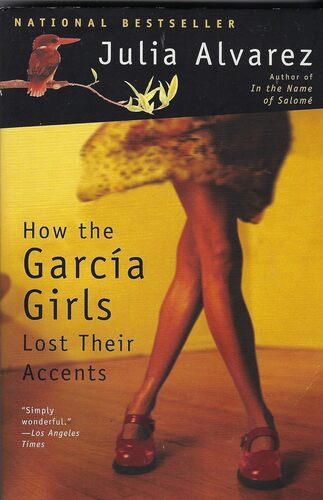
When their father´s part in a plot against a cruel dictador forces them to flee the Dominican Republic, the García sisters —Carla, Sandra, Yolanda and Sofía— come to America. But 1960s New York City is vastly different from the genteel, if troubling, existence they left behind, a world marked by maids, manicures, a loving family, and disappearances, secret police raids, growing political unrest. What sisters have lost —and what they find— is revealed in this exquisite novel form one of the premier novelists of our time. In America, the ...

La llegada de Julia Álvarez a Hablemos escritoras es hacer un tributo a las pioneras que abrieron un campo para la literatura de escritores de origen hispano en los Estados Unidos. En 2014 el Presidente Obama le dio la National Medal of Arts. Ha sido declarada Mujer del Año por Latina Magazine. Sus libros How the García Girls Lost Their Accents (A Plume Book, 1991) y In the Time of the Butterflies (Taller, 1994) son algunas de las obras más importante de la literatura de este género. Nacida en Nueva York su origen es también República ...

Marie Arana es autora de varios libros que han sido fundamentales para entender la historia de los latinos en los Estados Unidos. Latinoland, un estudio enciclopédico es uno de ellos, como también lo es American Chica y La plata, la espada y la piedra. Hoy celebramos que llega a Hablemos, escritoras con la traducción al español de Latinoland que será seguramente muy bien recibido. Investigadora de origen peruano que llegó a los Estados Unidos a los 9 años de edad y es prueba viviente del impacto que los latinos tenemos en este gran ...
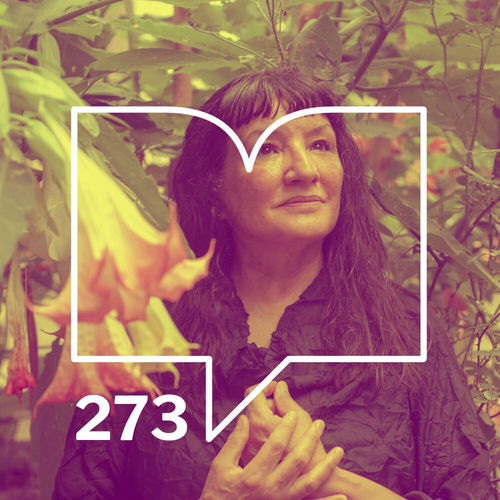
Hoy! Hoy! Hoy! llega a Hablemos Escritoras, Sandra Cisneros (Chicago, 20 dic 1954). Conocida internacionalmente, traducida a más de 20 idiomas, y ganadora del American Book Award, queremos invitarlos a saber más de la mundialmente conocida escritora Sandra Cisneros. La primera traducción de La casa en Mango Street al español fue por doña Elena Poniatowska y viene en camino la segunda traducción por Fernanda Melchor. Su último libro Martita, I remember you/Martita, te recuerdo, acaba de aparecer en traducción de Liliana Valenzuela. ...

Liliana Valenzuela (CDMX 1 jun 1960) es traductora y poeta radicada en Texas por más de 3 décadas. Ha traducido la obra de escritores como Sandra Cisneros, Julia Álvarez, Denise Chávez, Dagoberto Gilb, Cristina García y muchos más. Recibió el premio Alicia Gordon Award for Word Artistry in Translation y forma parte de The American Literary Translators Association. Valenzuela ha publicado los poemarios Codex of Love: Bendita ternura (FlowerSong Books, 2020) y Codex of Journeys: Bendito Camino (Mouthfeel Press, 2013) y ss miembro y fellow de ...

Ya bien lo dice Irene Vallejo en El infinito en un junco, que hay documentos que son verdaderos sobrevivientes. Archivos completos que tiene que luchar contra el tiempo y el olvido, pero también contra la represión y la censura. La historia de la humanidad está marcada por esfuerzos desesperados por proteger lo que éstos preservan y revelan, por la posibilidad de usar los libros para quitar la ceguera de los que no ven, de enseñar a los que no saben, pero sobre todo, de darnos libertad. Proteger los documentos de quienes escriben los libros es una ...

Hace unos días salió publicada en mi columna “Troyanas” en Literal Publishing una reflexión sobre tres escritoras que me conmovieron mucho en sus conversaciones con Hablemos, escritoras: Gioconda Belli, Julia Álvarez y Mónica Mayer. Gracias a ellas regresé a ese momento en el que fui niña, los 1970s, en el que el mundo estaba cambiando sin que me diera realmente cuenta de esa transformación. En donde el mundo estaba perdiendo más y más la inocencia hundiéndose en la vertiginosa modernidad.
En ...

Fundada en octubre de 1964 por Jesús Huarte, eligió como directores a Camilo José Cela y sus hermanos Juan Carlos y Jorge Cela. Su nombre proviene del árabe y significa «la fuente que mana y corre». En 1975, Jaime Salinas, hijo del poeta Jaime Salinas, ascendió a la dirección y relanzó la editorial como un nuevo y ambicioso proyecto, encargando el diseño de las cubiertas e interiores a Enric Satué, quien crea una imagen inconfundible que todavía hoy se mantiene en las cubiertas de la editorial. Salinas ...

La edición en formato bolsillo fue uno de los emblemas de Plaza & Janés a lo largo de toda su trayectoria, y así se mantuvo hasta que en 1984 el grupo Berstelmann adquiriño la empresa. En 2001, cuando se produjo la joint venture con la italiana Mondadori, bajo el nombre Random House Mondadori, se lanzó el sello Debolsillo para vender todo el catálogo de bolsillo heredado de Plaza y también de los nuevos libros que iban poniendo en circulación los distintos sellos del grupo. Desde entonces, los editores que cogieron ese testigo han ...

Es una de las principales editoras en lengua inglesa del mundo. Forma parte de la compañía Bertelsmann, una empresa de medios de comunicación alemana. Además de Estados Unidos y Reino Unido, Random House posee oficinas en Canadá, Australia y Nueva Zelanda. En Australia, las oficinas están localizadas en Sídney y Melbourne. En Nueva Zelanda, quedan en Glenfield, Auckland. En 1 de julio de 2013, después de la conclusión de un acuerdo entre Bertelsmann y Pearson ...

Vintage Books es una editorial comercial de libros de bolsillo establecida en 1954 por Alfred A. Knopf La compañía fue comprada por la editorial Random House en abril de 1960 y es una subdivisión de Random House. En 1990 se crea Vintage UK en el Reino Unido. Vintage comenzó a publicar algunos libros de bolsillo para el mercado masivo en 2003.